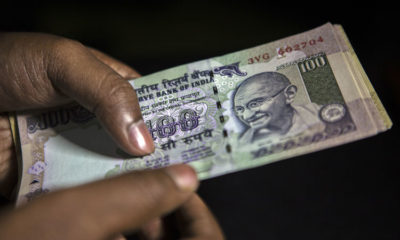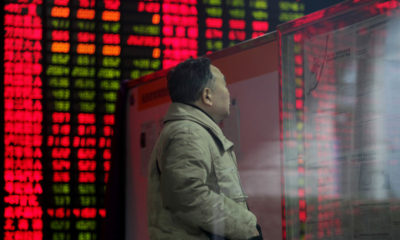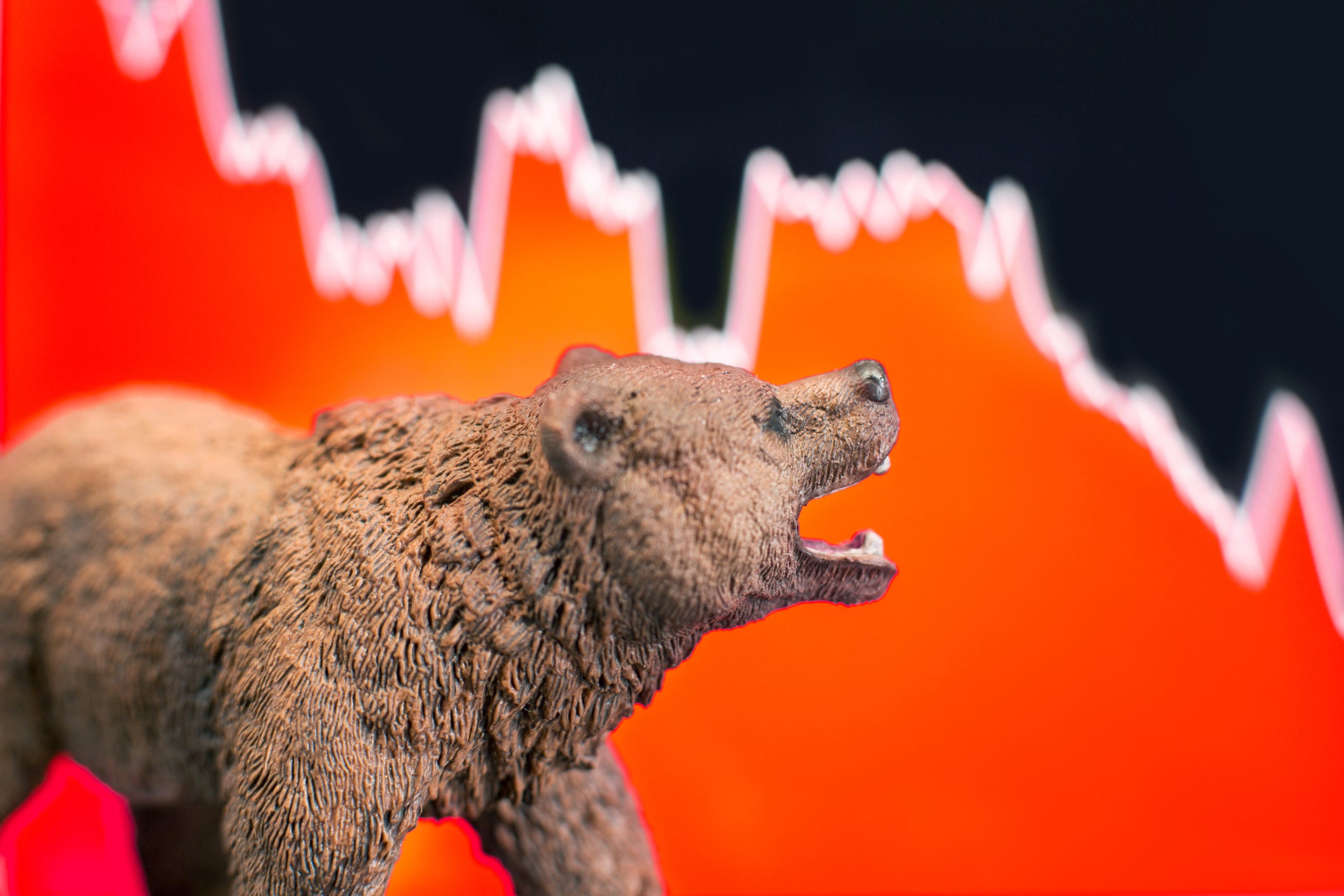US GDP had a nasty surprise for everybody overnight, unexpectedly falling by 0.90%, when market expectations were for a modest 0.50% gain. That marked two consecutive negative quarters of US growth, meaning that for many economists, the US is now in a technical recession. Off course, if you put a group of economists in a room today and ask them what two plus two is, none of them will agree with each other. And so, it is with the definition of a recession.
I am not an economist, but I did note something very interesting last night. Two economics research houses that we subscribe to here at OANDA, full of very brainy people, had two different opinions on the US economy for the rest of this year, post that GDP number. One said other indicators such as unemployment would catch up with the GDP, confirming a real and not academic recession. The other said that this is the worst it should get, and the US economy will improve in Q4. So basically, nobody has a clue what is going to happen.
I am not an economist, and a regression is something the wife says to me, amongst other words like potato, as I head out to rugby practice on Tuesdays. Here at “Voice of Reason Research,” I am struggling to join the gloom and doom mob while US employment and job opening metrics remain robust. We may get more clarity on the direction of travel of that piece of the puzzle at next Friday’s US Non-Farm Payrolls.
Still, the weak US GDP data did produce an entirely predictable reaction by markets in the current climate. US bond yields headed lower, and the US Dollar retreated. Notable was the continued culling of the USD/JPY long trade, the pair fell by 1.73% to 134.25 overnight, and the thinning of the herd looks like it still has plenty in it. Asian currencies finally started rising versus the greenback as well. For the FOMO gnomes of Wall Street, the calculation was easy. Lower US GDP equals recession equals fewer Fed hikes, a lower terminal rate, equals buy stocks. That arcane logic will be tested at some stage in the future, but not just yet.
US equity index futures are on fire in Asia today as well, rising impressively after Apple announced robust earnings and Amazon knocked it out of the park, both after the closing bell. US equity markets find themselves in a situation where a US recession is a buy signal for stocks, and decent technology earnings are a buy signal for stocks. Don’t feel bad if none of that makes sense; just respect the momentum.
Bucking the trend, South Korean Industrial Production rose by 1.90% MoM in June, and Japan’s Industrial Production jumped by 8.90% MoM in June. The year-on-year data still looks soggy, but the shorter-term data suggests it’s not all doom and gloom out there in Asia and that demand for semiconductors and high-end manufactured products remains strong. The problem remains on the consumer side, with Retail Sales in June for South Korea and Japan disappointing, falling 0.90% MoM, and rising 1.50% YoY, respectively. Both were quite bad misses and appear to reflect the impact of rising costs of living.
Australia’s PPI came in slightly lower at 1.40% QOQ Q2, potentially easing some RBA hiking nerves in the lucky country. And even New Zealand’s Consumer Confidence rose slightly in July to 81.90. Strange days indeed.
China’s Politburo reiterated its 5.50% GDP target for 2022 while reiterating its covid zero policy at the same time. But China’s Commerce stated that the domestic consumption recovery is not yet solid and more measures to boost it would be necessary. They also said that foreign trade faced high risks, difficulties, and uncertainties, according to Reuters. How that all coincides with a 5.50% GDP growth this year, I know not, and neither do China markets either, it seems. Chinese equity markets are sharply lower today.
For the rest of the day, German and Eurozone GDP Growth Flash for Q2 and Eurozone Inflation will take centre stage. The GDP data has downside risks for obvious reasons, but Inflation has upside risks, and a print above 8.60% will have the words stagflation and Europe used in a lot of sentences. The Euro has been unable to exploit a weaker US Dollar and rally meaningfully. Lower GDP and higher inflation numbers could see the Euro, and European equities, end the week on a sour note.
US Personal Income and Expenditure MOM for June round out the week, expected to rise by 0.50% and 0.90%, respectively. If the US consumer is still alive and well and the data is strong, the FOMO gnomes of Wall Street may temporarily pause for breath. Conversely, weak data probably sees another wave of buy everything as Wall Street prices in the now data-dependant Fed hiking less aggressively.
Happy Friday, everybody. I will be away for next week from Monday to Thursday next week, as Mrs Halley and I travel from Jakarta to Bali, where we will be reunited with both of our girls for the first time in over three years for a family holiday.
Another mixed day for Asian equities.
The soft US GDP data saw Wall Street pricing in a more dovish future Fed, lifting Wall Street higher overnight. The S&P 500 rose by 1.21%, the Nasdaq gained 1.08%, and the Dow Jones added 1.01% in a robust session. Aftermarket earnings releases from Apple were slightly higher than forecast, while Amazon released well above forecast earnings. That has sparked a sharp rise in Nasdaq and S&P 500 futures in Asia, while the value-centric Dow has lagged. S&P 500 futures are 0.65% higher, Nasdaq futures have leapt 1.45% higher, and Dow futures are unchanged.
The US stock market performance has once again had uneven follow-throughs in Asia. The Nikkei 225 is now down 0.20% after the overnight Yen rally continued unabated in Asia today, impacting exporters. However, South Korea’s Kospi has managed a 0.50% gain, with Taipei also adding 0.35%.
On Mainland China markets, things look rather grimmer after economic warnings today from the China Commerce Ministry. The Shanghai Composite has fallen by 0.72%, with the CSI 300 losing 1.10%. Hong Kong’s Hang Seng has slumped by 2.25%.
China and Japan’s performance seem to be tempering sentiment elsewhere in Asia as well. Singapore is 0.50% lower, Kuala Lumpur is 0.30% higher, and Jakarta is 0.45% higher. Bangkok is closed, but Manila has fallen by 1.08%. Australian markets are more closely tracking US markets today. The All Ordinaries have rallied by 0.90%, while the ASX 200 has gained 0.80%.
The mixed performance by Asia, and especially the China comments, mean European markets are unlikely to repeat yesterday’s positive session in early trading. Much will depend on the Germany/Eurozone GDP data and the Eurozone inflation data. Softer GDPs and high inflation prints will likely see European equity markets head south, especially with weekend risk beckoning.
USD/JPY slump dominates Asian trade.
The US Dollar selloff continued overnight after weak US GDP data saw it enter a technical recession. However, the US Dollars losses were unevenly distributed. With US yields moving lower post-data, USD/JPY plummeted by over 200 points as long US positions were routed, but EUR/USD remained unchanged, only able to reverse its pre-US data selloff.
That left the dollar index just 0.24% lower at 106.24 overnight, losing another 0.24% to 105.95 in Asia. Notably, the dollar index has now taken out the rising wedge support is at 106.45, which becomes initial resistance. The daily close under 106.45 overnight is a significant technical development, signalling deeper losses towards 1.0500 and 1.0350 and potentially extending to the initial 102.50 longer-term breakouts. Resistance is at 107.45 and 108.00.
EUR/USD slumped to near 1.0100 intraday pre US GDP but reversed all those losses after finishing the day unchanged at 1.0195. EUR/USD remains rangebound, with a weaker dollar offset by geopolitical and recession fears in Europe itself. EUR/USD is steady at 1.0210 in Asia. The multi-day resistance around 1.0275 remains formidable. Only a sustained break above 1.0360 now suggests a longer-term low is in place. Meanwhile, EUR/USD has traced out a series of daily lows around 1.0100. The 1.0100 to 1.0300 range is unlikely to fail into the weekend.
GBP/USD has booked only modest gains overnight and today, holding steady at 1.2185 but well clear of its technical breakout at 1.2100. Sterling looks likely to test 1.2200 imminently, signalling a further rally towards longer-term resistance at 1.2400. Support is now at 1.2100, and then 1.1960, followed by 1.1900 and 1.1800.
Softer US GDP data sent, US yields lower overnight, sparking a capitulation sell-off in USD/JPY as heavy long positioning was aggressively culled. USD/JPY collapsed by 1.73% to 134.25, and the selloff has continued in Asia. USD/JPY has slumped another 0.70% to 133.30, and my initial boundary for this occurrence, at 132.50, could be seen by the end of today. The selling in USD/JPY is further capping gains in EUR, GBP, AUD, and NZD as cross/yen positions are liquidated. Support lies at 132.50, 132,20 and then 131.50, but I am not ruling out a deeper decline as panic sets in. Resistance is at 135.50 and 137.50 but short of a reversal higher by US yields; risks remain skewed to the downside.
AUD/USD and NZD/USD are only slightly higher over the past 24 hours at 0.7005 and 0.6310, as AUD/JPY and NZD/JPY selling limits gains. But the technical picture for both remains constructive as both currencies staged upside breakouts higher a fortnight ago. They remain well above their breakout lines at 0.6790 and 0.6145.
Asian currencies finally started strengthening versus the US Dollar overnight after weak US data pushed US yields lower as recession fears heightened. The Korean Won led gains, falling to 1295.00 overnight, but THB, SGD, and INR also booked decent gains. Some profit taking this morning has seen USD/KRW and USD/THB climb 0.30% higher. It does look like some regional central banks are taking advantage of a weak US Dollar today to push their currencies higher. As Dennis Gartman says, always throw your rocks in the wettest paper bag.
USD/IDR plunged below 15,000.00 to 14,955.00 overnight and has mysteriously tumbled another 0.70% to 14,850.00 today. USD/PHP has plunged by 1.05% to 55.22 this morning. I am assuming that both BI and BSP are selling US Dollars, and I wouldn’t be surprised to see the RBI doing the same this afternoon. Timing, after all, is everything. With China, European, and US recession risks multiplying, the jury is still out as to whether we have seen the worst of the Asian FX sell-off.
Oil is surprisingly steady.
Oil prices edged higher overnight as the volatility in currency, bond and equity markets passed it by; most of the oil-related data had already been released for the week. So, although the intraday ranges were as wide as ever, ultimately, oil booked only small gains. It has given those back in Asia today as regional traders react negatively to the China Commerce Ministry’s comments. Oil looks set to range trade into the US data, and with the OPEC+ meeting next week, it may consolidate its recent gains over the next few sessions.
Brent crude rose 0.40% overnight to $107.60 overnight, falling by 0.75% to $106.80 in Asia. Resistance at $108.00 survived overnight, but a close above would be a significant bullish technical development, targeting the 100-day moving average (DMA) at $110.15. That is followed by $115.00 a barrel. Support is at $106.00, $104.00 and then 101.50 a barrel.
WTI traded in another giant four-dollar range overnight, finishing 0.90% lower at $97.25 a barrel as recession fears gripped US markets. It has fallen another 0.70% in Asia to $96.60 a barrel. WTI has resistance at $100.00, it’s overnight high. Support is at $96.00, the overnight low, followed by the 200-day moving average (DMA) at $95.00. WTI continues to look like the weaker of the two contracts on a technical analysis basis.
Gold rises on weak US Dollar, medium-term low in place.
Another fall in US yields on weak US GDP data was enough to inspire a decent rally in gold overnight, aided by a generally weaker US Dollar. Gold surged 1.25% higher to $1756.00 an ounce, adding another 0.40% to $1763.00 in Asia.
The chart has been suggesting, albeit unconvincingly, that gold has been trying to trace out a medium-term low since testing and bouncing off longer-term support at $1780.00 an ounce on the 21st of July. The price action since hasn’t been convincing, with the larger technical picture suggesting gold remained in danger. However, having taken our formidable resistance at $1745.00 an ounce overnight, the technical picture has convincing swung higher.
Gold should now trade back towards $1800.00 over the coming weeks if US yields remain soft. The breakout at $1745.00 now becomes support, followed by $1700.00 and $1680.00. Failure of $1675.00 would signal that the mother of all whipsaws has occurred. Resistance is now at $1780/85.00 an ounce, followed by $1800.00 an ounce.




 Naira4 weeks ago
Naira4 weeks ago


 Naira3 weeks ago
Naira3 weeks ago


 News4 weeks ago
News4 weeks ago
 Travel4 weeks ago
Travel4 weeks ago




 Naira4 weeks ago
Naira4 weeks ago


 Jobs3 weeks ago
Jobs3 weeks ago
 Naira3 weeks ago
Naira3 weeks ago


 Travel3 weeks ago
Travel3 weeks ago



















